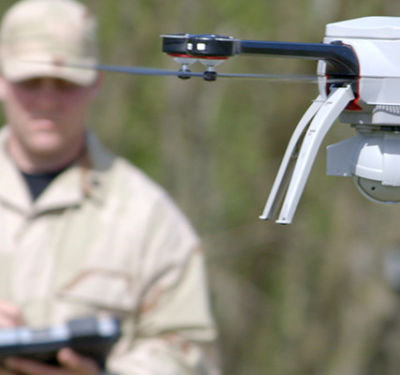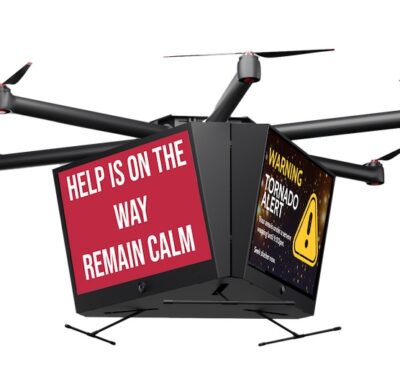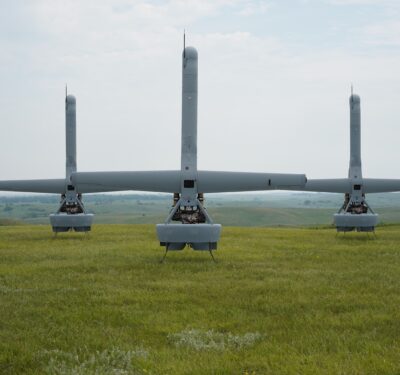
The City of Reno Integration Pilot Program (IPP) team is developing a system for fast drone delivery of automated defibrillators to improve the survival rate of cardiac arrest victims.
Cardiac arrest is the leading cause of natural death in the United States, affecting more than 300,000 people. When the electrical signals that control the heart’s pumping ability short-circuit, causing an arrest, every minute matters. There is only a 10 percent chance of surviving such an event when the cardiac arrest occurs outside a hospital.
Survival is dependent on immediate cardiopulmonary resuscitation (CPR) to increase the blood flow to the heart and brain, along with an electrical shock from a defibrillator to stop the abnormal heart rhythm. For every minute without life-saving CPR and defibrillation, chances of survival decrease about 10 percent.
The Integration Pilot Program (IPP) team led by the City of Reno and Flirtey, a Reno-based drone delivery company, will test the use of drones to deliver automated external defibrillators (AEDs) to cardiac arrest patients in Washoe County, Carson City, and the Reno-Sparks Indian Colony.
“The national average for ambulance-based delivery of defibrillators is around 10 minutes,” said Matthew Sweeny, CEO of Flirtey. “If we can improve the response time to five or six minutes, we can bring the survival rate closer to 50 percent.”
HOW IT WILL WORK
Drone delivery of AEDs will supplement existing 911 services provided by the Regional Emergency Medical Services Authority (REMSA), the exclusive emergency medical services provider for Washoe County, as well as local police and fire departments. When a 911 call for a cardiac arrest is received, REMSA will dispatch emergency medical services and simultaneously notify Flirtey.
If a defibrillator is in close proximity to the victim and can be delivered faster by drone than by ambulance, it will be dispatched to the victim’s location by a pilot located at a Flirtey flight command center. Life-saving instructions will be provided by 911 operators throughout the call and during the retrieval of the defibrillator, which will be lowered from a hovering drone.
FedEx, one of the partners in the program, will host the drones and defibrillators in secure areas at their storefront locations. AEDs include voice prompts to assist bystanders and will not apply a shock if that is unlikely to help the person. The Federal Aviation Administration (FAA) will use data collected from the flights to craft new rules for complex low-altitude operations.
WHY RENO?
In 2013, the FAA selected the state of Nevada as one of six unmanned aircraft system (UAS) test sites in the United States. The availability of testing facilities in Reno were a big part of why Flirtey chose Reno as its home in 2014. The city has been very supportive of their efforts to advance drone delivery, Sweeny said, and now, through the IPP, the city and its partners want to create a model for future medical device deliveries using drone technology—while helping to achieve the safe integration of drones into the national airspace.
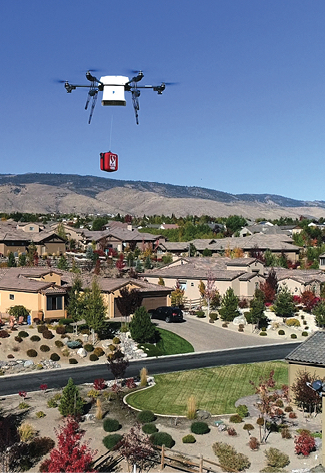 “IPP takes drone delivery to the next level,” Sweeny said. “We are graduating beyond testing into revenue generating AED operations, as well as commercial operations.”
“IPP takes drone delivery to the next level,” Sweeny said. “We are graduating beyond testing into revenue generating AED operations, as well as commercial operations.”
Reno Mayor Hillary Schieve called it an “opportunity to create high-paying jobs and help develop the kind of drone technology that will have a direct and positive impact on the citizens of Reno.”
This isn’t the first drone delivery effort for Flirtey in Reno. In 2016, the company partnered with convenience store chain 7-Eleven to make the first FAA-approved drone delivery to a customer’s residence. In all, 77 deliveries were made from one store location to a dozen Reno customers. Customers could order anything from Slurpees to hot food items and over-the-counter medications. Pilots were in visual line of sight of the drones during the deliveries.
FIRST MULTI-DRONE FLIGHTS
In September 2018, Reno and Flirtey announced they had completed the first flights for the IPP. A single Flirtey pilot simultaneously flew multiple drones and simulated the delivery of AEDs in the presence of the FAA. The drones were within the visual line of sight of the pilot.
“We understand this was the first time the FAA has ever approved multi-drone operations for drone delivery,” Sweeny said. “This is a real key to allowing us to deliver defibrillators in the city of Reno and also to paving the way for commercial drone delivery at scale.” A waiver was granted based on advanced autonomous drone technology and a strong safety track record.
Sweeny explained the significance of the multi-drone flights. “You can only have one person riding a bike. You can only have one person driving an ambulance, but you can have one Flirtey pilot overseeing many drones. We are starting with two drones but eventually we will increase that number.” With autonomous operations, Sweeny believes drone delivery has the potential to be the lowest cost delivery method.
WHAT’S NEXT
Flirtey will continue to make multi-drone deliveries while it is working on the next set of FAA approvals for beyond visual line of sight (BVLOS) flights. Flying BVLOS will enable pilots to operate the drones from a remote Flirtey flight command center.
As is the case with all of the IPP teams, Reno will have to provide the FAA with a strong safety case.
Flying BVLOS is the next big step for the industry, Sweeny said. “If these drones can operate routinely with remote pilots, that will enable scale and multiple deployments, life-saving operations and commercial deployments.”
Several industry partners are providing essential technology to the Reno team. AirMap will provide the UAS traffic management system (UTM) the Flirtey pilot will use to access information necessary for safe integration into the Reno air space at low altitudes.
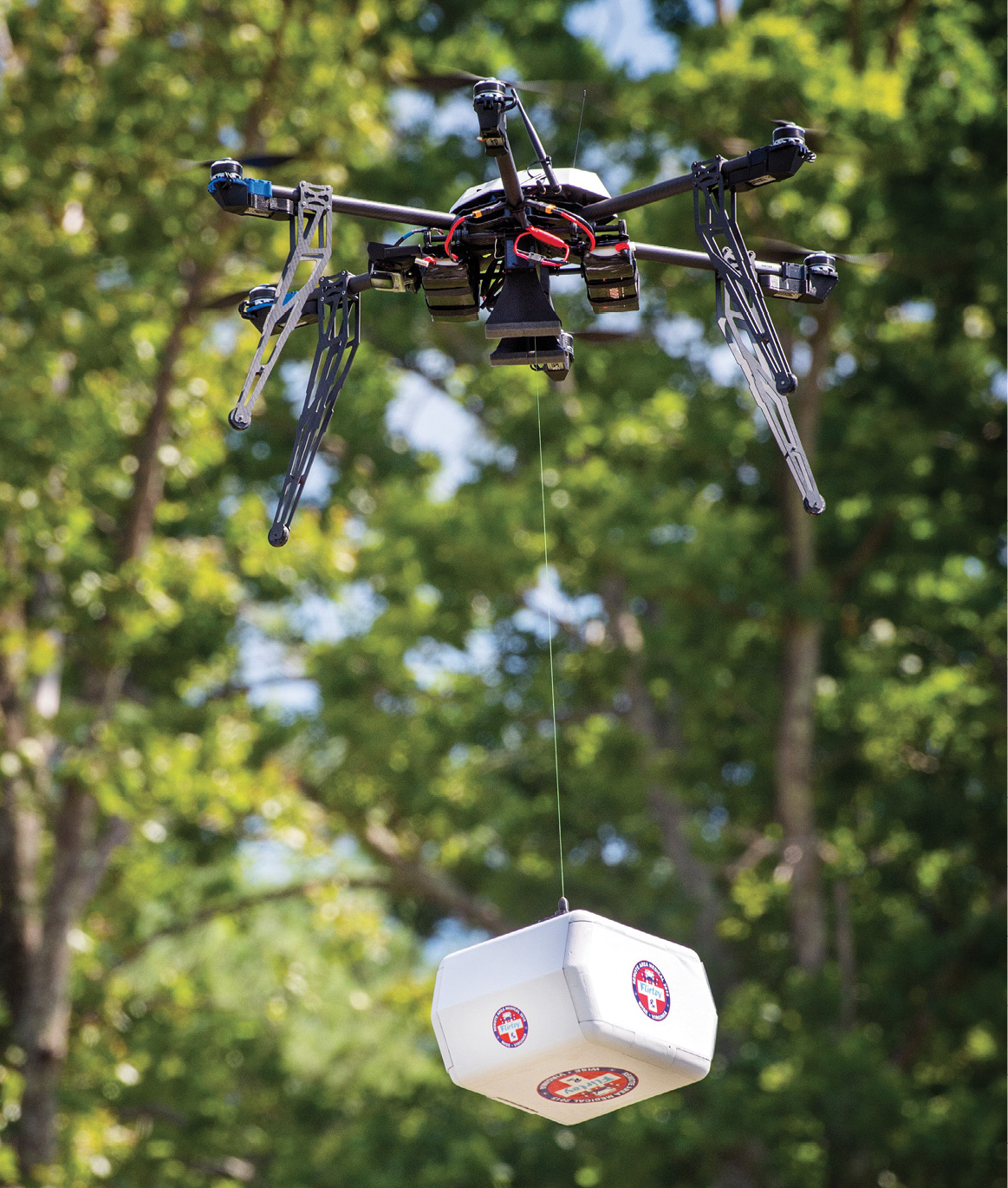
As a UAS Service Supplier (USS) for NASA’s UTM program, AirMap has participated in past trials to successfully demonstrate UTM capabilities, including geofencing, rule-based situational awareness, flight planning, airspace conflict resolution, notice and authorization, real-time telemetry, contingency management, and remote airspace management for a variety of BVLOS flight simulations. NASA is conducting the multi-year, collaborative UTM research project with the goal of developing and demonstrating a possible UTM system that can safely enable drone operations.
During the Reno IPP effort Iris Technology’s sense and avoid system will allow the drones deployed in the area to “see” as a human pilot does. A camera, processor and computer vision software will be used to perceive the drone’s surroundings and avoid collisions. Computer vision software will classify and track moving objects and identify their trajectory and velocity in relationship to the drone.
Successful drone delivery of AEDs within the urban, suburban and rural environments of Reno will also mean flying over people, at night, and in poor weather conditions. By feeding weather and other data into the UTM system, pilots can be alerted to potential risks on the ground, as well as in the air.
For example, phone data can potentially provide a heat map of where people are on the ground so drones can be diverted. This helps to mitigate the risk of flying over people. T-Mobile is ensuring the connectivity of the delivery drones for the Reno IPP.
PUBLIC OUTREACH
Engaging the public and building support for drone delivery is an important next step for the Reno project. The communications teams from Reno and Flirtey are working on a community outreach plan to educate residents on the life-saving capabilities of drone delivery while providing mechanisms to collect community feedback. Public opinion surveys will be conducted early on and then again in 2020 near the end of the program. Education efforts will include a combination of community meetings and workshops, public relations, and electronic media. A website will be available where residents can ask questions and voice their concerns.
“We are interested in learning what the public’s tolerance is for drones in the air,” said Scott Gilles, legislative relations program manager for the city of Reno. “The community outreach and education aspects of IPP attracted us to the program.”
Representatives from the Reno-Sparks Indian Colony on the IPP team will provide insights to help build the framework for drone delivery regulations on tribal lands. The colony’s 1,150 members from the Paiute, Shoshone and Washoe tribes reside on 28 acres in Reno and on 1,920 acres in Hungry Valley. The group will also work with REMSA and Flirtey to determine how drone delivery of AEDs can be integrated into the colony’s health services.
Drone delivery is gaining grassroots support in Reno, Sweeny said. He cites research completed after the 7-Eleven drone delivery trial conducted by Flirtey as evidence. Of the survey participants, 100 percent said they were extremely satisfied with the delivery experience and 100 percent said they would use Flirtey drone delivery in the future.
A NEW WAY TO WORK
The UAS IPP differs from previous FAA test projects in that the IPPs are being led by state, local and tribal governments working together with commercial enterprises and the FAA. While the IPP teams must still obtain waivers from the FAA, they have the advantage of working with a dedicated program manager who facilitates interaction with the partners.
“IPP is a very promising initiative,” Sweeny said. “In just a few months, Flirtey has achieved a major first for the drone industry. We’re excited at the pace of developments in this program and thrilled to help lead regulatory efforts to grow this new industry.”


